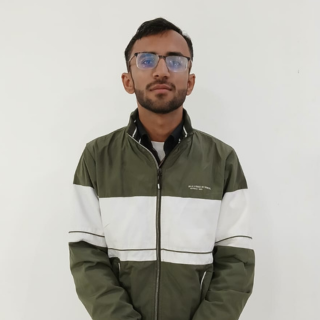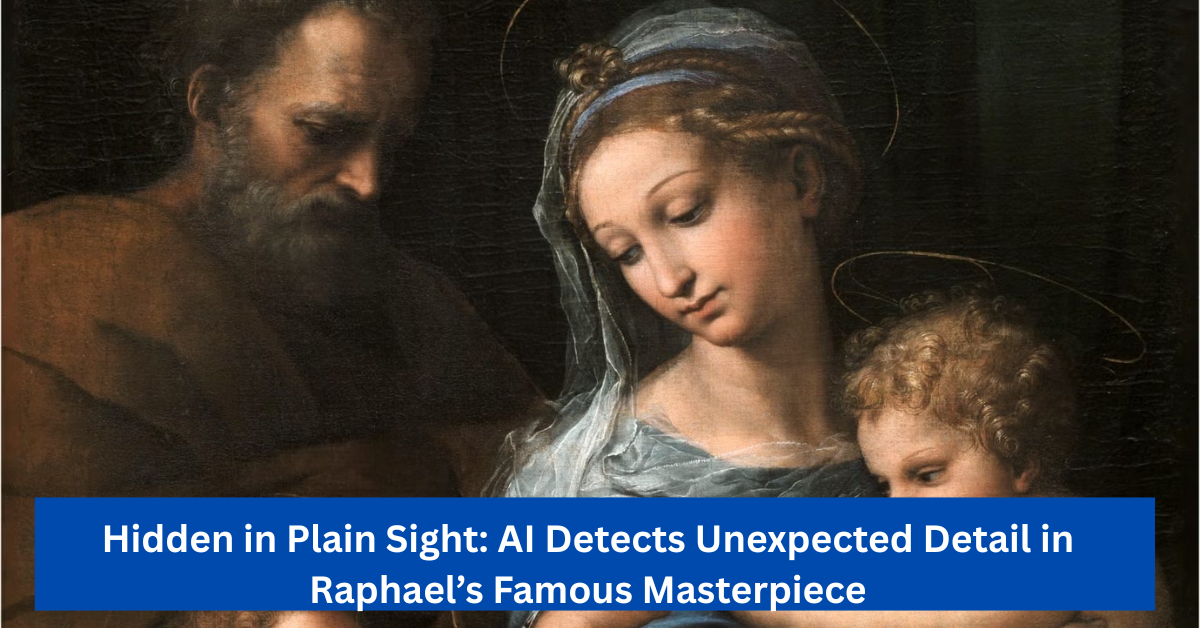Artificial Intelligence (AI) is changing the way we look at history—and even art. In a fascinating new discovery, AI has found that part of a famous painting, long believed to be entirely painted by the Italian master Raphael, may actually have been done by someone else.
The painting in question is Madonna della Rosa, also known as Madonna of the Rose. It’s one of Raphael’s well-known works and shows four figures—Mother Mary (the Madonna), the baby Jesus (the Child), St. John, and St. Joseph. But researchers now say, with the help of AI, that the face of St. Joseph might not be Raphael’s work after all.
This discovery comes after years of debate among art experts. Many had already wondered if Raphael had fully painted Madonna della Rosa. While most agreed that the main parts of the painting—Mary, Jesus, and St. John—matched Raphael’s signature style, St. Joseph’s face always seemed a bit “off.” Now, AI appears to confirm those suspicions.
A team of researchers from the United Kingdom and the United States created a custom AI program to test the painting. This wasn’t a normal AI model—it was specially trained using known Raphael paintings. The system learned to study brushstrokes, colour choices, shading techniques, and other tiny details that are hard for even experts to spot with the naked eye.
Hassan Ugail, a professor of computer science and mathematics at the University of Bradford in the UK, explained how the AI tool works. “We used a process called deep feature analysis,” he said. “We trained the computer to understand the unique style of Raphael—right down to microscopic details.”
He added, “The computer can actually see more than the human eye can. It looks at every small pattern and stroke.”
Normally, AI tools like this need large amounts of data to work well. However, since there weren’t thousands of original Raphael artworks to study, the team used a special system. They based their tool on Microsoft’s ResNet50, a powerful image recognition model, and improved it by using another technique called Support Vector Machine (SVM). This helped the AI make more accurate guesses, even with limited examples.
The model has already proven successful. When tested earlier, it correctly identified genuine Raphael paintings with 98% accuracy. But what made this study special is that instead of analysing the whole painting, the researchers asked the AI to look at each figure’s face one by one.
And the results were surprising.
When the AI analysed the Madonna, Child, and St. John, it said all three matched Raphael’s style. But St. Joseph’s face stood out. It didn’t follow the same patterns, strokes, or details as the rest. According to the system, it was likely done by someone else.
Ugail explained, “When we tested the painting as a whole, the result was unclear. But when we separated the figures and tested them individually, it became obvious. All matched Raphael—except St. Joseph’s face.”
This supports what many art critics have believed since the 1800s—that Raphael may not have painted the entire artwork himself. Some had pointed out that St. Joseph’s face looked different or less refined than the other figures. Now, thanks to AI, there’s stronger evidence to support that idea.
So who painted St. Joseph?
Experts are not fully sure, but there’s a strong possibility that it was done by Giulio Romano, one of Raphael’s students. During Raphael’s final years, he had many assistants working in his studio. It’s possible that Romano or another student finished the painting or touched it up after Raphael died in 1520.
The Madonna della Rosa was painted sometime between 1518 and 1520, just before Raphael died. Over time, the painting passed through many hands and was studied by art historians across the world. But until now, no one had a tool powerful enough to confirm the doubts about who painted which part.
That’s where AI steps in.
This is not the first time AI has been used in the art world. Technology has been helping museums, historians, and galleries discover new insights into famous works. From identifying fake paintings to restoring old artworks, AI is now becoming an important tool in the art world.
But some worry that AI might replace human experts. Ugail doesn’t agree. He believes AI is only a support tool—not a replacement. “This is not about AI taking people’s jobs,” he said. “Authenticating a painting takes many steps. Experts study the painting’s history, materials, brushwork, and more. AI is just one more tool to help with that process.”
In other words, AI doesn’t replace the art historian—it works with them.
The full research findings were published in Heritage Science, a well-respected journal that focuses on preserving cultural history and art.
This discovery opens up many possibilities. Could other famous paintings also have hidden details waiting to be uncovered? Could some works we thought were painted by one artist actually be by another? AI might help answer these questions in the future.
As AI becomes more advanced, it’s likely to play a bigger role in studying art, history, and even archaeology. What makes this story even more exciting is that the technology doesn’t just help with new creations—it also helps us look back at history and understand it better.
The Madonna della Rosa is still a masterpiece, and it still carries the beauty and emotion that made it famous. But now, thanks to AI, we may finally know the truth behind its creation—and that’s a masterpiece of discovery in itself.

Deepak Grover is a dedicated content writer at OTE News, specializing in government affairs, public policy, and current events. With a keen eye for detail and a passion for factual reporting, he ensures readers receive accurate and insightful news. Deepak holds a degree in Political Science and has experience in research-driven journalism.
When not writing, he enjoys reading historical books, exploring hiking trails, and staying updated with global political trends. His commitment to ethical journalism makes him a trusted voice at OTE News.




